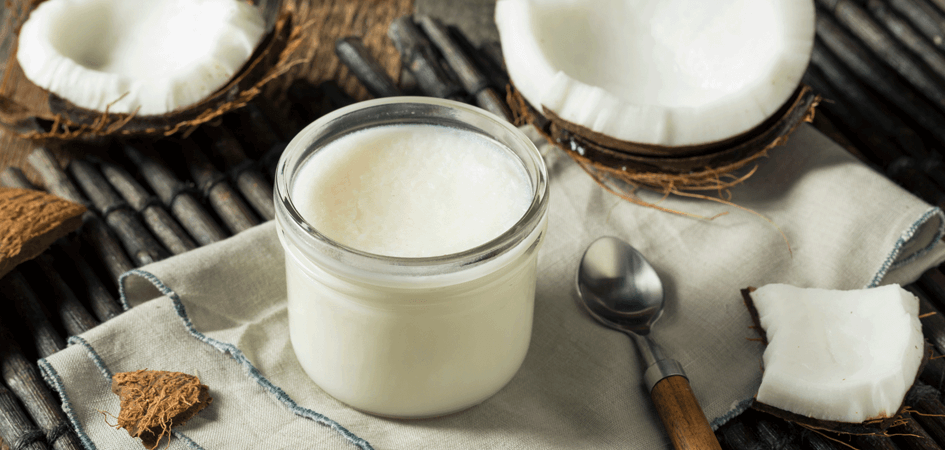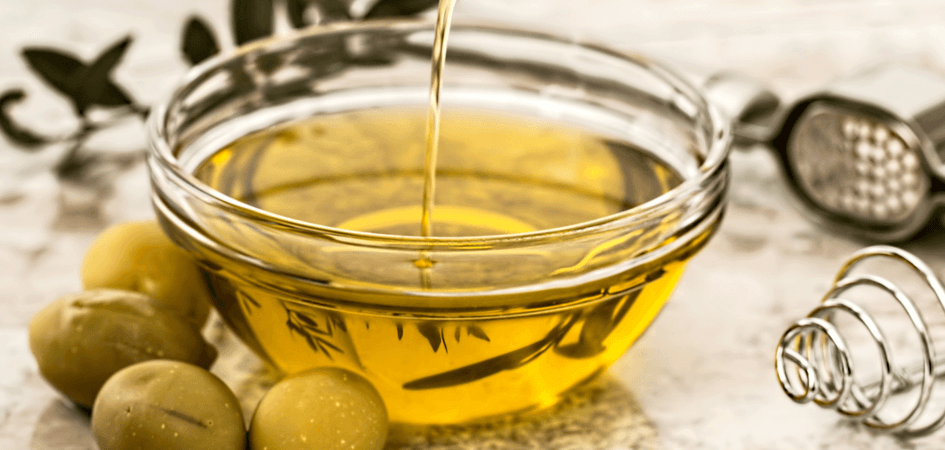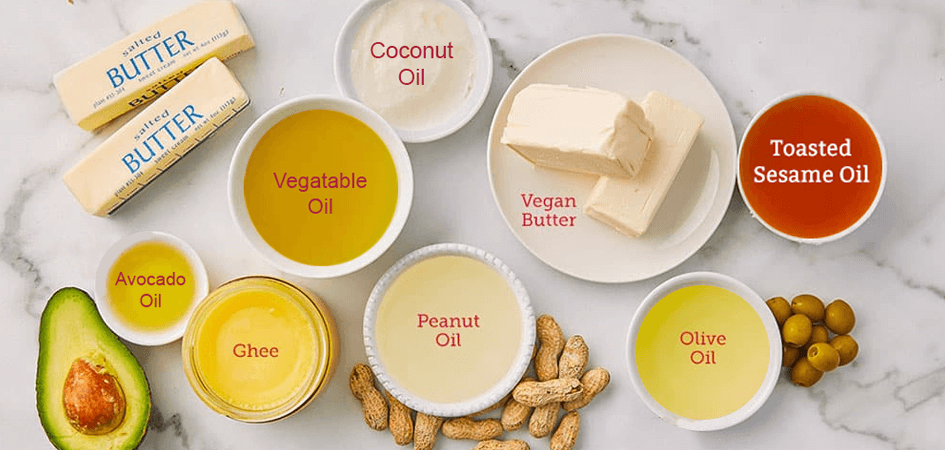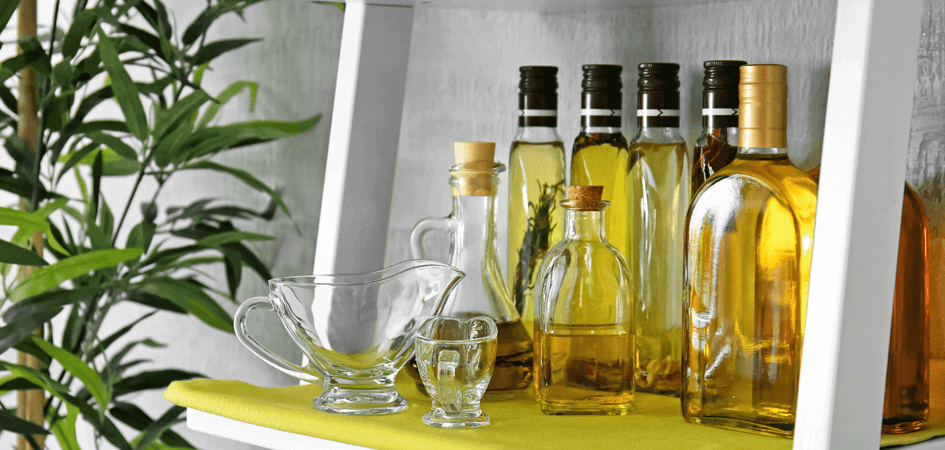
Essentially, fats make your baked goods tender and moist. However, they also serve a scientific purpose in how your baked goods rise. It adds a richness, flavour, and moisture to your baked goods. It also acts as a powerful tenderizer in the baking product.
You have probably used olive oil, butter, ghee, or even coconut oil as a cooking fat. There are so many cooking fats readily available on shelves. Not to mention, the variety of uses and unique characteristics of each type. Is it refined or unrefined? Does it have a high or low smoke point? What is the shelf life? Etc. In this blog, we try to decode some baking fa(c)ts. So, let us begin by dividing fats into different categories for a better understanding.

Refined Fat vs. Unrefined Fat
Refined fats are the ones that have undergone more processing than unrefined fats. Generally, refined fats have more ingredients added to them during the refining process. This results in key differences in taste, shelf-life, and smoke point. Take the example of coconut oil. Refined coconut oil is neutral in smell and taste and has a higher smoke point. On the contrary, Virgin (unrefined) coconut oil has a coconut smell and taste and has a lower smoke point.

Liquid Fat vs. Solid Fat
Liquid fats are mostly found in the form of oils. Some common exceptions like unrefined or extra virgin coconut oil are in solid form until heated. Similarly, solid fats can always be melted into liquid forms but can also be re-solidified when cooled. Some examples of solid fats are butter, vegetable shortening and lard. Lately, refined coconut oil has gained popularity as an essential solid fat in the baking community.
Using the right form of fat can make or break a recipe. For instance, when making cookies, most recipes will call for softened butter to follow the creaming method—this could not be replicated if a liquid fat is used.

Flavourful Fat vs. Neutral Fat
Liquid and solid fats can be further classified into flavourful and neutral fats. Knowing the difference between flavourful and neutral fat can add a flair to your cooking.
Some oils like toasted sesame oil have a very distinct natural flavour. Since sesame seeds are toasted prior to extraction, the oil is deep golden brown and tends to have a strong and intense nutty flavour. Similarly, unrefined coconut oil has a natural coconut flavour whereas extra-virgin olive oil has a fruity aroma and a rich, nutty flavour.
On the other hand, neutral oil is great for cooking. Neutral oil, such as corn, canola, rapeseed, or safflower, do not have a distinct flavour and work in a lot of different dishes since they don’t impart their own flavour in the food.

How to choose the right fat when baking?
While choosing the right fat for your baking need, always take into consideration the fat content and smoke point. For frying or cooking at high temperature, use fat with high smoke point and containing high saturated or monosaturated fat percentage. Here is an important chart for you to keep handy while cooking/baking:
| Sr. No. | Name | Type | Smoke point |
|---|---|---|---|
| 1 | Beef Fat | Saturated | 275°C | 540°F |
| 2 | Butter | Saturated | 175°C | 350°F |
| 3 | Chicken Fat | Monosaturated | 205°C | 400°F |
| 4 | Cocoa Butter | Saturated | 205°C | 400°F |
| 5 | Coconut Oil | Saturated | 175°C | 350°F |
| 6 | Corn Oil | Polyunsaturated | 230°C | 450°F |
| 7 | Cotton Seed Oil | Polyunsaturated | 220°C | 420°F |
| 8 | Ghee | Saturated | 250°C | 480°F |
| 9 | Hemp Oil | Polyunsaturated | 165°C | 330°F |
| 10 | Extra Virgin Olive Oil | Monosaturated | 160°C | 320°F |
| 11 | Palm Kernel Oil | Saturated | 330°C | 450°F |
| 12 | Palm Oil | Saturated | 225°C | 440°F |
| 13 | Peanut Oil | Monosaturated | 225°C | 440°F |
| 14 | Pork Fat/Lard | Monosaturated | 190°C | 375°F |
| 15 | Canola Oil | Monosaturated | 205°C | 400°F |
| 16 | Rice Bran Oil | Monosaturated | 255°C | 490°F |
| 17 | Safflower Oil | Polyunsaturated | 230°C | 450°F |
| 18 | Sesame Oil | Polyunsaturated | 210°C | 410°F |
| 19 | Soya Bean Oil | Polyunsaturated | 230°C | 450°F |
| 20 | Sunflower Oil | Polyunsaturated | 230°C | 450°F |

How to store and re-use fat?
Buying small amounts of oil can help decrease the chances of oxidization in oil and prevent it from getting spoilt. Since the main reason for oxidization is exposure to oxygen, light, and heat, it is essential to store the cooking fat in a cool and dark place immediately after use.
Hope this information helps make your baking process easier. Happy Baking!
